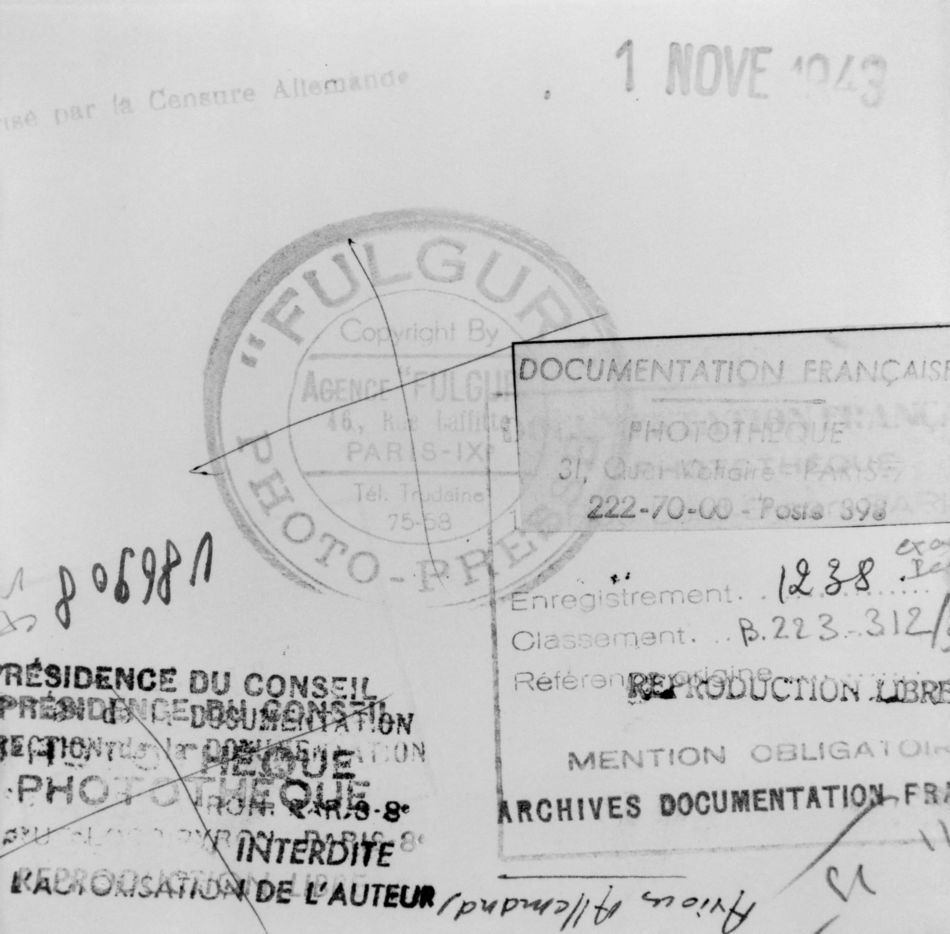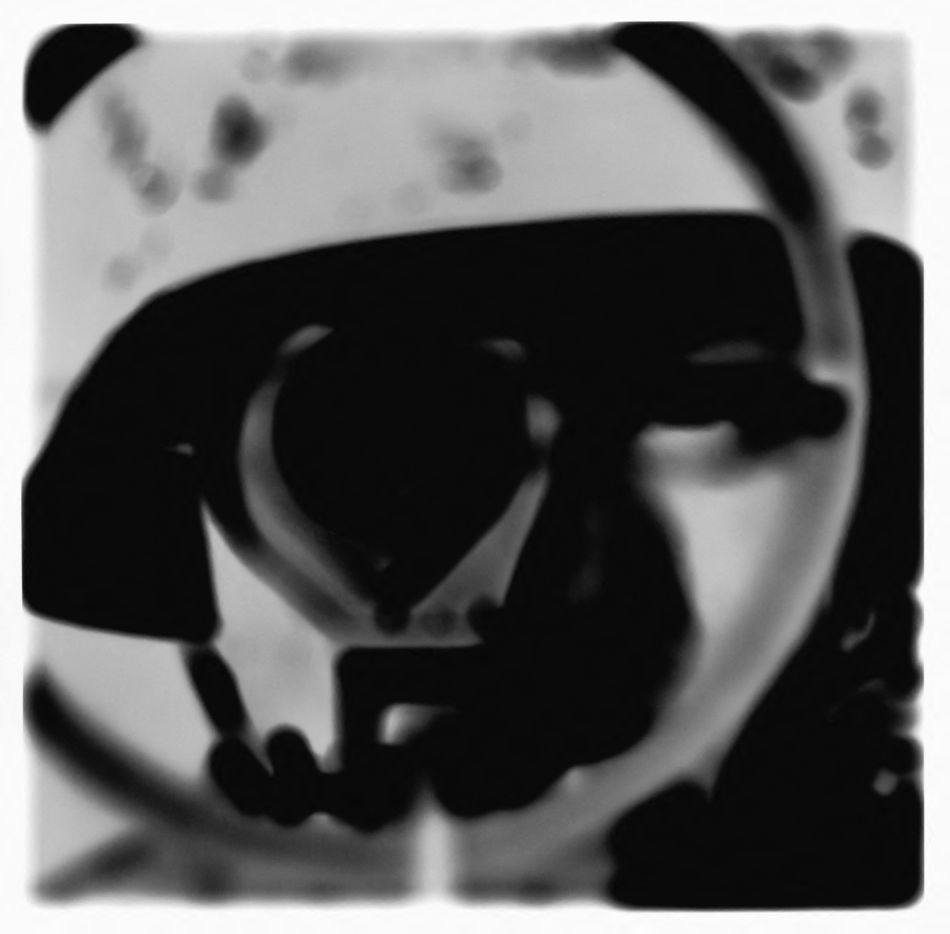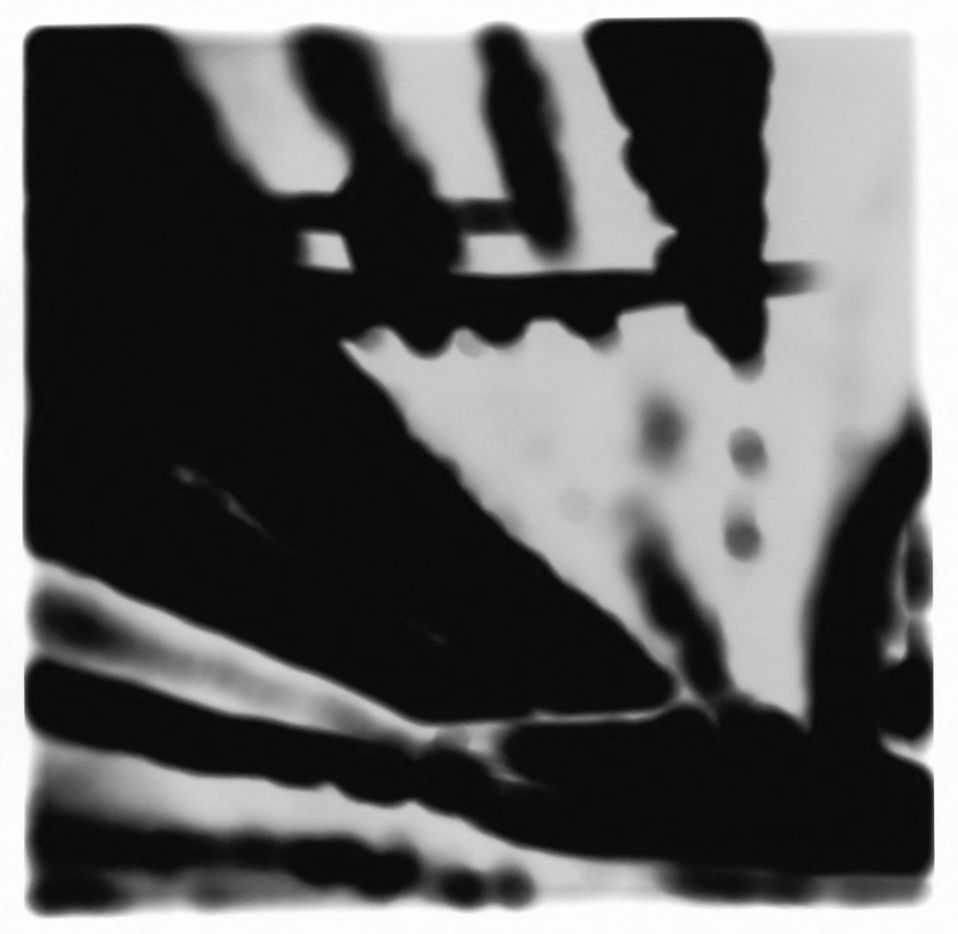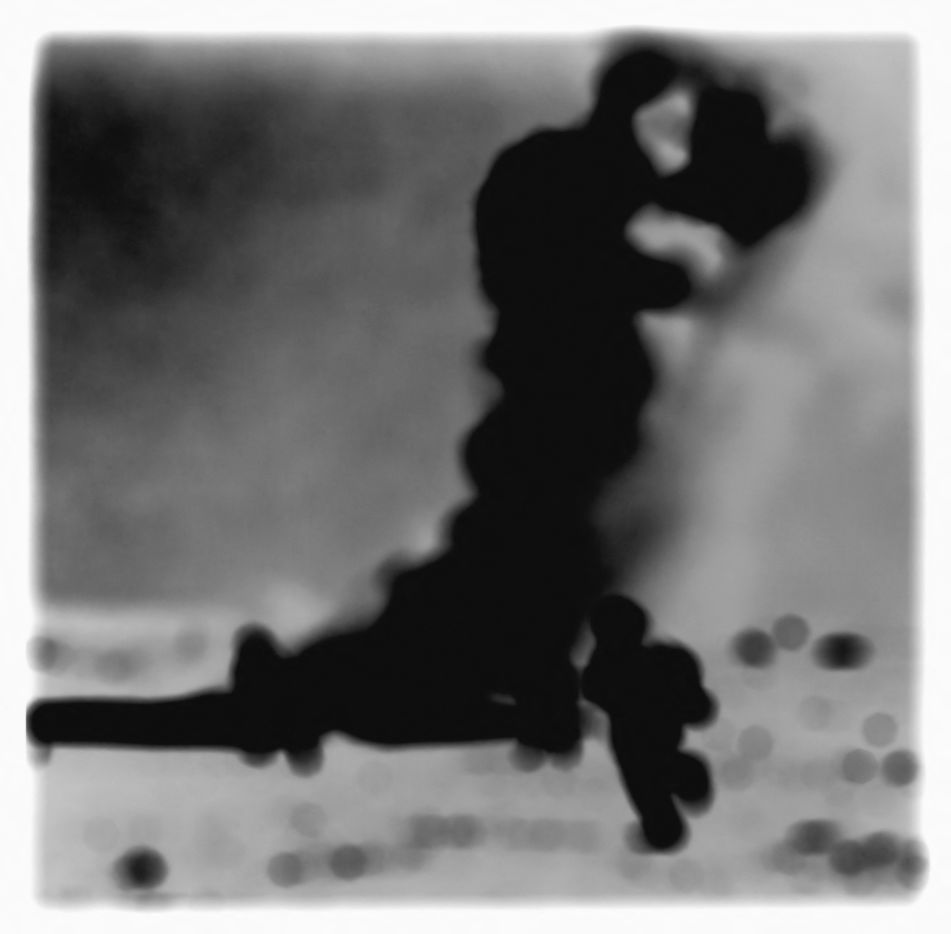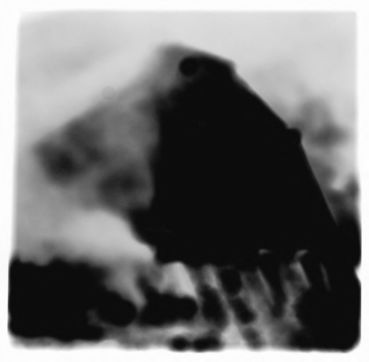Libre de droits
Peut-être que la photographie n'est qu'une maladie du regard, qu'elle n'est advenue que pour rendre le regard aveugle et justifier son aveuglement. Ce travail de Lionel Fourneaux serait alors presque une immense protestation contre la photographie elle-même.
Car exposer à nouveau ces images pose un problème. Pourquoi reprendre, réexposer, retravailler une image : de la guerre, du visage, du camp de la mort, de la mémoire ? Est-ce même possible ? Peut-on avoir affaire avec l'image de ces choses ? Peut-on les retravailler ? D'ailleurs a t-on affaire à une réélaboration ?
Ce gris qui se dégrade au noir, qui est si souvent la marque de fabrique des photographies de Lionel Fourneaux, son empreinte dans l'empreinte photographique, montre qu'il y a eu un travail. Un travail de laboratoire certes, mais plus généralement encore un travail, comme on parle du travail du deuil, ou de l'inconscient, ou de l'histoire.
Il faut le définir : ces images sont à la fois détournées de leur usage, voire de leur fonction et défocalisées. Travaillées au foyer. Elles ont mis le foyer à distance, se sont éloignées du point, du net, du témoignage, de la mise au point et au net de l'histoire petite ou grande, visible ou invisible dont elles sont la trace. Non qu'elles rendent plus flou le message, mais elles éloignent l'image du témoignage. Pour aller où ? Au sens ? A la question sans réponse ? A l'infini ? A la défiguration ? A l'oubli ?
On ne peut s'empêcher d'imaginer un « lien » entre ces mots : déportation, détournement, défocalisation. Pourquoi, lorsque je lui en ai parlé, comme ça, en dessous, il m'a raconté des histoires de famille, des grands-mères juives, des années folles grand-bourgeoises qui le rattrapaient et qui se révélaient dans son analyse.
Il s'agissait moins, dans ses mots, de poursuivre l'aventure que de constater qu'elle se poursuivait d'elle-même. On songe que la peau des êtres, de la mémoire et de l'histoire n'a jamais cessé de s'étendre. Dans la matière collective que sont les oeuvres d'art, on sait que tout est déplié, allongé, traité, égrené, poursuivi, conservé. Que toute oeuvre d'art est un détournement et une défocalisation. Un excès autour du centre. Et, plus généralement encore, toute oeuvre est la figure de ce déplacement du fini des choses vers un infini du sens. Une définition. C'est le quatrième mot, le quatrième pouvoir, la définition. Mais quel peut être le pouvoir de définition de cela ? Nous avons devant nous les portraits de l'intraitable tâche, la part sans titre de l'origine ; le mal, peut-être, mais aussi la mémoire immense qu'il libère. Photographie qui fixe l'infixable et qui donne un nouveau mouvement à la nuit qui y était enfermée. Définition de la nuit. Aujourd'hui, plus que jamais l'Infini est invisible. Ou plutôt, le visible ne porte l'infini qu'à condition de manquer à la préalable définition.
« L'invisible n'est pensable que dans son invisibilité mais saisissable dans sa complexe relation au visible.
Voir contre la vue. » (Jabès)
Le travail de Lionel Fourneaux s'en prend à cette essence : la photographie comme machine à tout voir Quand tout est vu, ce qui est tué, c'est l'invisible, l'unique invisible, Dieu peut-être. L'instant de Son image et de Sa ressemblance en nous. Si elle sait aller jusqu'au grain de ma peau, voir mon point noir, elle fait reculer chaque fois davantage l'âme qui y est enclose.
Bernard Cier, écrivain et philosophe
Extrait du texte publié en 1995 dans le catalogue accompagnant l'exposition DEFINITION, SITUATION, EXPIRATION , Centre d'Art Contemporain de Basse-Normandie.
Libre de droits
Perhaps photography is only a disease of the gaze, that it only came into being to make the gaze blind and justify its blindness. This work by Lionel Fourneaux would then be almost a huge protest against photography itself.
For exposing these images again poses a problem. Why take back, re-expose, rework an image: of war, of the face, of the death camp, of memory? Is this even possible? Can we deal with the image of these things? Can we rework them? Moreover, are we dealing with a re-elaboration?
This gray that degrades to black, which is so often the trademark of Lionel Fourneaux' photographs, his imprint in the photographic imprint, shows that there was a work. A work of laboratory certainly, but more generally a work, as one speaks about the work of mourning, or of the unconscious, or of history.
It is necessary to define it: these images are at the same time diverted from their use, even from their function and defocused. Worked in the focus They put the focus at a distance, they moved away from the point, from the net, from the testimony, from the focus and the net of the small or big, visible or invisible history of which they are the trace. Not that they blur the message, but they distance the image from the testimony. To go where? To meaning? To the unanswered question? To the infinite? To disfigurement? To oblivion?
One cannot help but imagine a "link" between these words: deportation, detour, defocusing. Why, when I spoke to him about it, just like that, underneath it, he told me family stories, about Jewish grandmothers, about the Grand-Bourgeois roaring twenties, which caught up with him and revealed themselves in his analysis.
It was less a question, in his words, of continuing the adventure than of noting that it was continuing itself. One thinks that the skin of the beings, of the memory and of the history never ceased to extend. In the collective matter that are the works of art, one knows that all is unfolded, lengthened, treated, ginned, continued, preserved. That any work of art is a detour and a defocusing. An excess around the center. And, more generally still, any work is the figure of this displacement of the finite of the things towards an infinite of the sense. A definition. It is the fourth word, the fourth power, the definition. But what can be the power of definition of that? We have before us the portraits of the intractable task, the untitled part of the origin; the evil, perhaps, but also the immense memory that it releases. Photography that fixes the infixable and that gives a new movement to the night that was locked in. Definition of the night. Today, more than ever, the Infinite is invisible. Or rather, the visible carries the infinite only on condition of missing the previous definition.
"The invisible is thinkable only in its invisibility but graspable in its complex relation to the visible.
Seeing against sight." (Jabès)
The work of Lionel Fourneaux attacks this essence: photography as a machine to see everything When everything is seen, what is killed is the invisible, the only invisible, God perhaps. The instant of His image and likeness in us. If it knows how to go to the grain of my skin, to see my black spot, it makes the soul that is enclosed in it retreat each time more.
Bernard Cier, writer and philosopher
Extract from the text published in 1995 in the catalog accompanying the exhibition DEFINITION, SITUATION, EXPIRATION, Centre d'Art Contemporain de Basse-Normandie.
